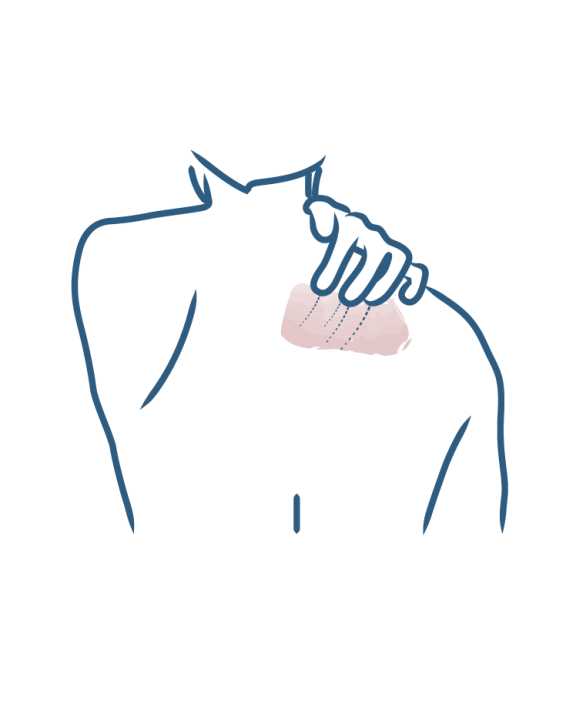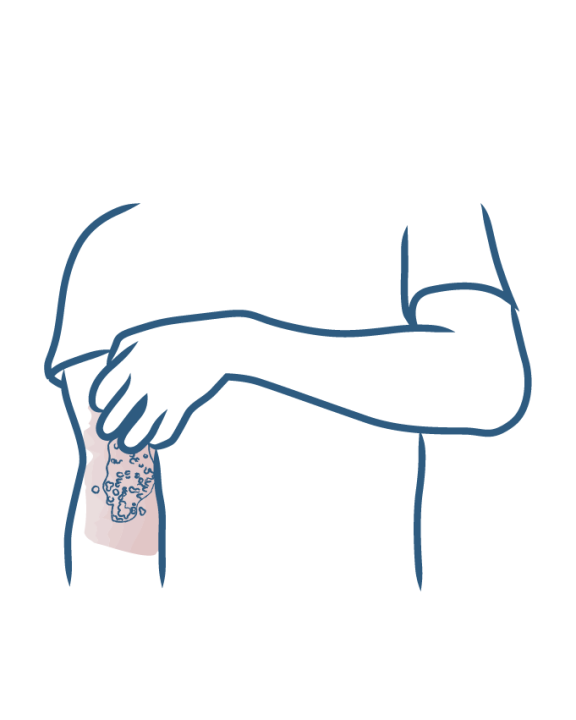Symptoms of an eczema flare-up
- SUMMARY
- Eczema
Cutaneous xerosis, dry skin related to eczema
- What is infantile eczema?
- Cortisone cream to relieve eczema?
- How should you treat baby’s and infant’s eczema?
- When should you consult a physician about your baby's eczema?
- What soap should be used for babies with eczema?
- Eczema in babies and children: the areas most often affected
- Eczema in babies: what habits should you adopt?
- Body eczema: hands, feet, arms, back, face, etc.
- Eczema in the ears
- Leg eczema or varicose eczema
- Scalp eczema
- Eczema on the back
- Eczema around the mouth
- Foot eczema
- Hand and finger eczema (chronic hand eczema)
- Facial eczema
- Eczema on the neck and nape of the neck
- Eczema of the eyelids, eyes or palpebral eczema
- Arm eczema (elbows, armpits, forearms)
- Eczema on the stomach and belly button
- Living with eczema day to day
- What soap should be used for eczema?
- Swimming pool, swimming when you have eczema?
- Eczema: can it be cured?
- Eczema: how to treat itching
- Eczema cream, ointment: what should you use?
- What are the habits to avoid when you have eczema?
- Eczema: What daily reflexes should you adopt?
- Eczema: how can flare-ups be avoided?
- Eczema: what foods should you eat?
- Which detergent should eczema patients use?
- What causes eczema?
- Clothing contact eczema
- Contact eczema due to cleaning products
- Contact eczema due to nickel and chromium
- Contact eczema due to medication and topical treatments
- Allergy-induced eczema
- Hereditary eczema
- Stress-induced eczema
- Perspiration-induced eczema
- Contact eczema due to cosmetics
Cutaneous xerosis, dry skin related to eczema
One of the main symptoms of eczema, and atopic eczema in particular, is dry skin. It is also known as xerosis.
Why is your skin dry when you have eczema?
Dry skin or xerosis is a major symptom of eczema, but it doesn't appear right away: usually between 1 and 2 years of age.
In the case of eczema, the skin no longer fulfills its role as a barrier and the water usually stored in the skin evaporates more easily. This results in dry, uncomfortable skin. Chronic eczema is a particular form of dry eczema, marked by thick plaques that may crack in places.
What situations promote xerosis?
Certain factors favor cutaneous xerosis: cold, wind, bath or pool water, certain soaps, etc.
To avoid severe xerosis, which is a source of discomfort, protect yourself from unfavorable weather conditions, avoid prolonged bathing, rinse well after swimming in the pool or the sea, use a soap suitable for atopic skin and hydrate your skin well.
What are the solutions to fight against xerosis?
Faced with xerosis, there is only one solution: hydrate the skin continuously! Emollients are rich in water, fats, humectants (which capture water) and occlusive agents (which prevent water evaporation). These different ingredients help to fight xerosis and temporarily restore the skin's barrier function. Adapt the emollient to the degree of cutaneous xerosis: use a lotion or cream in case of mild to moderate xerosis; favor balms in case of severe xerosis.
Emollients are applied daily to healthy skin, i.e. skin not affected by eczema plaques; as a follow-up to topical corticosteroids on areas affected by eczema but completely healed. Also of note is the proven value of medical devices in the form of a soothing repair cream to accelerate the treatment of plaques and limit their reappearance.
More information
- Discover Itching
Symptoms of an eczema flare-up
Itching
- Discover Oozing, purulent eczema
Symptoms of an eczema flare-up
Oozing, purulent eczema
Our care routines
Skin prone to atopic eczema, contact eczema, chronic eczema and/or, eyelid eczema
Dermatological expertise
To better understand your skin and hair, discover our exclusive content and innovative care products designed to improve your quality of life..





